Hayward Chlorinator Troubleshooting & Repair Guide
The Hayward Chlorinator comes in an offline and an inline model. The inline chlorinator connects using PVC fitting and unions and is piped “inline” with the swimming pool plumbing. The “offline’ Hayward Chlorinator hooks up in a completely different way. This type hooks up using flexible chlorine feeder hoses with saddle connection fittings. Now that you know that there are two different styles of the chlorinators you will now have to find out what type you have before you can start working on it.
Before working on either the in ground model which is the CL220 or the above ground swimming pool model which is the CL110 you will always want to make sure you can run the pool water though the chlorinator for a few minutes. Sometimes chlorine gas can build up inside the chlorinator and when you open it, the gas could make you sick. Always be sure to stand back when removing a chlorinator lid that has chlorine tablets inside of it. Try to always run water through the chlorinator by turning the pool on first, this was NOT a typo that was said twice, Chlorine gas can be very dangerous, be careful anytime you work with any type of swimming pool chlorine or tablets.
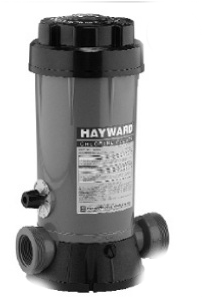
When working on the chlorinator you will want to make sure that your swimming pool filter system is shut off. You will also want to unplug t he pump cord if possible to prevent the swimming pool timer from kicking on the pool pump while you are working on rebuilding your Hayward Chlorinator.
How To Replace The Hayward CL220 & CL110 Cover O-Ring
One of the most common o-rings that will leak on both the CL220 and the CL110 Hayward Chlorinators is the top cover gasket as shown in part number 6 in the diagram. This part is called the Hayward Chlorinator Cover Replacement O-ring if you should decide to buy the part at a local pool supply store such as Leslies or even online.
The first thing you will need to is to remove the hold down screw that connects the top of the cover to the bottom disk below. You will first need to remove the cover that protects the hold down screw. This hold down cover is part #1 in the diagram. The hold down screw you will be removing is part #2 in the diagram. Once you remove the screw, which is, plastic you can remove part #5, which is the bottom, halve of the cover. You will now to be able to see the o-ring. You can now take a flat head screwdriver and pop the o-ring of the bottom part of the cover disk. Once the old o-ring is removed you can replace it with the new Chlorinator o-ring that you have purchased. You will also want to put a bit of Jack’s Pool Magic grease on the o-ring to prevent it from drying out.
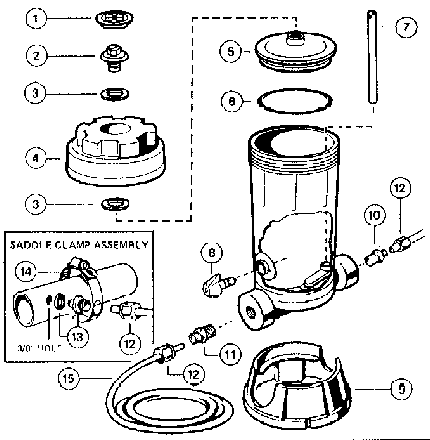
Now that the new o-ring is back on the disk you can start to put the chlorinator back together in the reverse order that was described you above. Be careful and do not over tighten the hold down screw or you could crack it. It’s only made from plastic so you need to be careful when tightening this back down.
How To Replace The Hayward CL110 Chlorine Feed Hoses
The Hayward CL110 Chlorinator is a bit different from the CL220 model. This model uses flexible black chlorine feeder hoses to connect the tank to the filter system. From time to time these lines will become brittle and need to be replaced. You can buy replacement Hayward Chlorine feeder lines online or from a local swimming pool supply store.
To replace the lines on the Hayward CL110 Chlorinator you will need to loosen the nuts at the end of each line. Turning them counter clockwise will loose these nuts, be sure to do it carefully or the chlorine feeder line nuts could break or strip out. Once the nuts are loose you can remove both the feed and return lines. The Hayward re-build kit for the Chlorinator should have new nuts and lines in the pack.
You will now want to measure the length of the lines before cutting them and it’s very important to cut them straight or they will leak. Once you have pre cut the lines you will want to slip on the new lock down nuts and screw them on to the saddle fittings that you removed them from. Make sure to hold the line in all the way as you are tightening them down to ensure a proper seal. If the lines leak after installing new ones your problem could be an end that is cut on an angle, go back and re-cut that end of the line and re-install the line and you should not have a leak.
How To Adjust The Chlorine Setting on The CL110 & CL220
On the side of the Hayward CL220 & the CL110 is an adjustment knob that has a dial setting on it. The dial setting ranges from 1 to 10. You can use this dial on the side of the chlorinator to control the amount of chlorine that goes back into your swimming pool. To increase the level of the chlorine into the pool you would want to turn the dial up towards the 10 setting. If you wanted to have the chlorine feeder feed at the lowest setting you would adjust the dial to 1. Most people keep the dial set on mid way, which is 5, until the pool is running for about 2 weeks and then fine tune it later on for the proper chlorine levels.
How To Check The Direction Of Flow On The Hayward Chlorinator
In order for the Hayward CL220 or the CL110 to work right you must have the chlorinator set and installed with the correct direction of flow. On the side of the chlorine feeder you will see an arrow that says, “flow”. This arrow needs to be pointed towards the return side of the swimming pool plumbing.
How To Drain The Hayward CL Style Chlorinator:
If you want to drain the chlorinator you will find a drain plug on the bottom. You can use a 9/16 open-end wrench to remove this drain plug. Turn the drain plug counter clockwise and then the drain plug will be able to be removed. Once you remove the drain plug all the water will properly drain from the chlorinator if it is standing in the upward position.

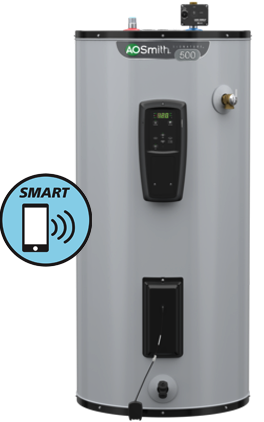
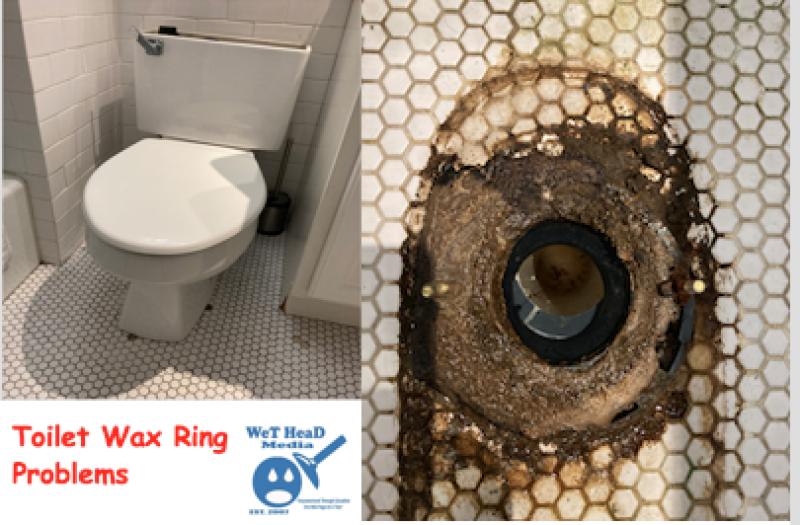
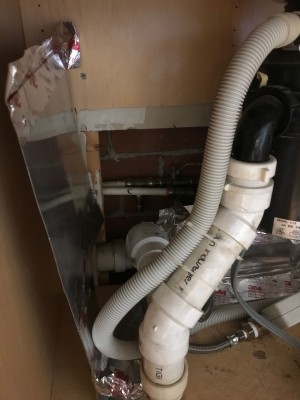
My Hayward in-line chlorine feeder is not putting enough chlorine in the pool. It is only a few years old. I think it might be clogged somewhere, possibly with hard water residue or perhaps a piece of chlorine tab. Does anyone know how to clean or unclog these devices?
Hi John,
After years of being in the sun and from the tabs themselves these go,
I would just replace the whole unit if you want my opinion, the time you spend messing around with parts and time to try to get it going correctly will not be worth it.
If you have unions on your Chlorinator you can easier remove it and replace it with a new one in an hour or less and save yourself a headache ,
Let me know if you need more help,
Joseph
3 years ago we replaced the liner of our pool and with that we also exchanged the Hayward Chlorinator CL220 for a new one.
We never had any issues with the old one so we stayed with Hayward.
Big mistake! Since we have the new one we go through about 3-4 O-rings a season. The original O-ring is about 15-16$.
If it is sitting for a while we can only open the lid with tools and it is not the first time that I pinched my fingers when trying to press in the security latch and turnming the cover.
We decided to change to a Pentair 320C.
And as a side note: we realized that Hayward’s quality went downhill in other areas too…
Gee, I have an in-line Hayward that was probably 5 years old when I bought the house – in 1995. If you check your tablets every week and lube the o-ring once a month you should never have a problem opening it. You should expect to replace the o-ring about once every 18-24 months.
I’ve been wondering about using seasonal settings (for central FL). I’ve been using 5, but I suspect I could go much lower in the winter. Any suggestions?
If you haven’t already, try the “All-in-one” tabs (with algaecide); I generally use a total of 4 tabs (2 all-in-one and 2 regular). Except for this week (when I skipped a cleanng and let the tabs run out), I haven’t used liquid algaecide in three years. They even cleared up the black algae I’ve been battling for years.
I have an off-line Hayward which is 6 years old.
This season I cannot get the chlorine level high enough however high I put the dial valve setting. The tester shows just WHITE.
Is it possible the feeder is blocked somewhere and is not feding the pool. I have cleaned all the hoses.
Would appreciate your thoughts.
John
Water is coming up and leaking out the center of the lid, did something come loose or go bad, how do I stop this leak?
Hi Stacey,
You can go down to a local pool store and pick up a new o-ring for the top lid. The o-ring has gone bad so now the cover is leaking. Take the cover with you to the pool store and they will probably install the o-ring for you while you are there buying it.
Let me know if you need more help,
Joseph
The lid on my cl220 no longer closes entirely. No matter how hard I try, I cannot get it to the locking tab (it comes up almost a half revolution short). Is this a bad lid? Or could the chlorinator body have become warped while in storage?
I store it under the house, so sun/heat is not an issue, but it gets cold in the winter.
My Hayward Chlorinator CL200 is leaking from the lid. I took it apart yesterday and the o-ring looked to be in good condition except that it seems to have expanded. It doesn’t fit snuggly around the inside piece of the lid. Because it does not fit snuggly could this be the reason that the leak is occuring. The leak just recently occurred and is not consistant so I am assuming that this is the cause. Should I just replace this o-ring or look for some other cause? I inspected the lid and did not see and cracks or deformities with it.
Thanks,
Ed
Try putting vaseline around the o-ring. I did this last year and it worked great.
CAUTION!!! Vaseline actually attacks the o-ring material, breaking it down and making it gummy. Use a silicone-based lubricant. Make sure that it has no petroleum carriers or volatiles in it. Keg-Lube is a great lubricant for o-rings – find it at your friendly neighborhood bar & restaurant supply.
I’m having the same issue as bob above. Can’t get the thing tightly closed, no matter what. It’s been getting worse each year, no matter how often I replace the gasket in the lid to the point that it simply will not come anywhere near fully closing, though it doesn’t leak. I’ve finally (’cause I’m slow) begun to wonder if I’m getting the wrong gasket – but no others are offered at the local stores. Additionally, the chlorination is hit or miss at best. Sometimes levels are zero, sometimes 5 or above – doesn’t matter what the clorinator is set at.
Hi Mike,
If you have already replaced the cover o-ring and lubed the tank threads and STILL cannot get the thing closed, then this means that your tank is warped and needs to be replaced. This happens from the hot sun and Chlorine gases that build up inside and is a common issue with these, but if you haven’t change the cover gasket then try that.
Please let me know if you need more help,
Joseph
Thanks for the reply, Joseph. I’ll try lubing the threads as a last chance effort before replacing the unit. It’s out of the sun, but it’s always possible it has been warped from gas pressure at some point. It has been in place for the 8 years I’ve owned the house, and who knows how long before that, so it may just be that it’s time to get a new one!
Hi Mike,
Oh ya, 8 years + , Time to get a new one, I don’t like to be the bearer of bad news, but a new one is the way to go.
Let me know if you need any more help,
Joseph
Hayward CL220 – Chlorine Tabs not dissolving and no chlorine is getting to the pool. Any advice? Seems like a flow problem although the feed/return rubber tubes feel like water is flowing through when the pump is on. Any quick tests I can run for troubleshooting where the problem is? Is it crazy to disonnect the return tube from the return pipe to the pool while the system is running to see if water is flowing out? Also, same on the other side, see if water is flowing in? Should I just replace the whole thing? Thanks for any advice!! -Peter
Check to make sure the inlet and outlet valves are on the correct sides of the chlorinator. I was having this same problem until I re-read the instructions and realized I had them reversed.
Hi Jane,
That’s an excellent point, as a pool guy, I have seen many new pool guys and homeowners alike hook the chlorinator up with the flow in the wrong direction.
To everyone that is reading, There is a “FLOW” arrow on the side of your chlorinator. The flow will always point away from the filter and towards the pool.
let me know if anyone needs more help.
Joseph
Hi Joseph,
I have a new Hayward offline chlorinator.
Not chlorinating at all. Checked inflow and outflow tubings, again. Had it installed a week ago, by a reputable pool company in town. They are correctly positioned.
Will check chlorine levels again tomorrow.
Meanwhile have had to shock pool with Liquid chlorine.
Any othe suggestions ??
Thanks.
I also just purchased a CL220 Hayward Chlorinador and I am not getting enough Chlorine into my pool. I looked at the flow arrow and that is fine. I have a strong water stream in to Chloriador and out. I think the main problem is that these new CL220 is that they are not filling up completely with the pool water. I thing they are only holding a small amount of water in the canaster that needs to be filled so the chlorine can disolve. All i know is the inline one I had for 12 years worked great. I put a pool heater in and a new pump and decided to switch to the CL220 and made a big mistake. I will be taken this one back to the store. If anyone has an answer on how to correct please let me know before the weekend or the Pool store will not be happy with my return without a box. LOL ;)……
Please help?
Doug
Doug,
How is the filter pressure? Did you back wash to make sure your pressure is good?
BTW – The chlorinator is only supposed to fill a bit. NOT completely up all the way like your thinking……
BTW – How old are your chlorine tabs? Are they bought this year? Chlorine Tabs only have a 6 – 8 month shelf life……
Let me know if you need more help,
Joseph
In my post above, I had installed my new chlorinator with the flow in the correct position, but I had the valves themselves reversed. I had put the outflow valve with the little ball inside on the inflow side of the chlorinator. Once I correccted that, the tabs are dissolving just fine. You can really feel the water going through the tubing now.
I have a hayward 4.2 chlorinator. After years of use it has cracked and is leaking. Pool store advised me not to replace it. Said when they install pools today they do not use a chlorinator (old school). Instead advised me to put tabs in skimmer basket and that will put chlorine in pool. I can control it by how many tabs in skimmer. Before I cut this out of line and just substitute pvc pipe what do you think? Thanks
I used to put my tabs in the skimmer, it is not as easy to regulate as your pool store makes it sound. My pool store told me if you only run the pump a few hours a day the superchlorinated water sitting in the skimmer tends to eat them a little faster and cause spots of high Cl around the skimmers. This is not a problem with a chlorinator since the water sits in the reservoir, not the return lines. Not to mention you cannot do this if you have a heater, the chlorinator must come after it, same goes for Nature2.
I run my pump 24/7. I am still going to buy a floating chlorinator also and throw a few tabs in it. When I shock my pool with bags of shock I do not predissovle. I run it through the skimmer. I think it helps clean the sand and is then blown thru jets into pool. Not a problem so far.
Chlorine tabs in the skimmer is a very bad idea. The super-chlorinated water from the dissolving tabs are drawn into your filter system and will attack the plastics and rubbers of the skimmer, hoses, and filter – I’d rather replace an $80 chlorine dispenser every few years than a $400 filter system.
Always put any chlorinating devises either into the general body of pool water (floating dispensers), or on the output side of your filter system. Also, in the latter case, ensure the output is directed sufficiently away from the input (skimmer) to prevent the same effect.
For those who have liner pools, never, never, never throw tabs directly into the pool (no matter how much fun it is to skip them across the surface…), or dump undissolved chlorine granules in. These will sink to the bottom and sit on the vinyl liner. Besides bleaching the liner white where they fall, the pocket of super-chlorinated water on and around them will also attack the liner, creating brittle patches, and will accelerate its eventual failure.
Put tablets into a floating dispenser and dissolve granulated chlorine in a bucket of pool water before adding. Pour the dissolved chlorine around the periphery of your pool, or, with the filter running, pour it into the stream from the water return into the pool to disperse it.
I just changed out my sand filter for a cartidge unit. Due to many trees in the yard, I chose a unit with large surface area. Overall sysem pressure is about 8 psig.
My off-line unit is no longer dosing. I wonder if the system pressure differential is too low.
No info available in shop manual.
Any opinions?
The top has been very difficult to screw on from the first time I installed the CL 220. After a year of use I cannot screw the top on all the way. I replaced the o-ring – no help. I can now screw the top on about two thirds down, even after rubbing it with ivory soap. Also it is leaking from the top. Sounds like the unit is ruined? Any suggestions? Thanks!
I broke the top off the hold down screw on my Hayward Chlorinator and now I can’t get the cover off. Any suggestions on how to get it open? Do I have to drill out the remaining part of the screw?
Hi Sandy,
You can just use a Flathead screwdriver to pry the top off. Then you can buy a replacement plastic bolt that will hold the two pieces together again.
Let me know if you need any other help.
Joseph
Thanks Joseph. I thought that might be the case. However, I started prying and when it did not come up easily, I thought I’d better stop before I really screwed things up! I will proceed with caution based on your advice. Thanks!
Hi Sandy,
Yep, no problem, Yea, once you pry it off you will see the o-ring etc. When prying just watch for the o-ring, so you don’t pinch it :)
If you need any more help let me know,
Joseph